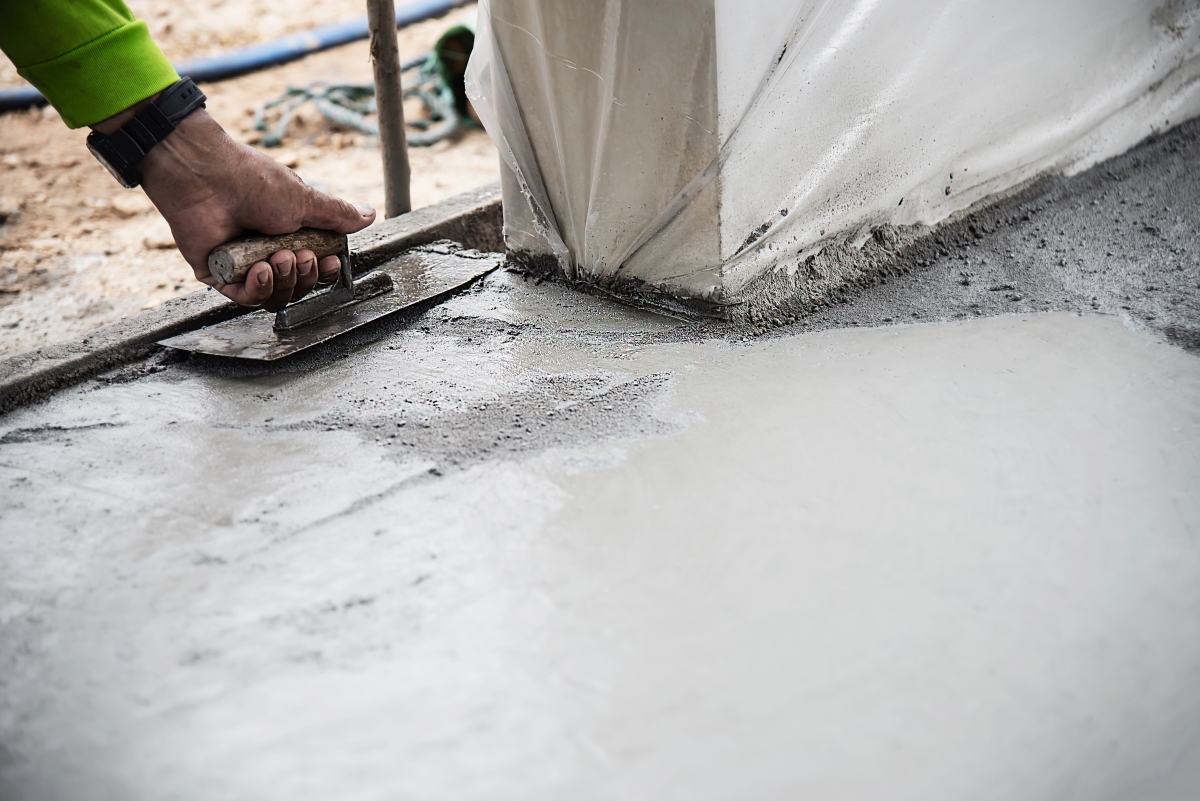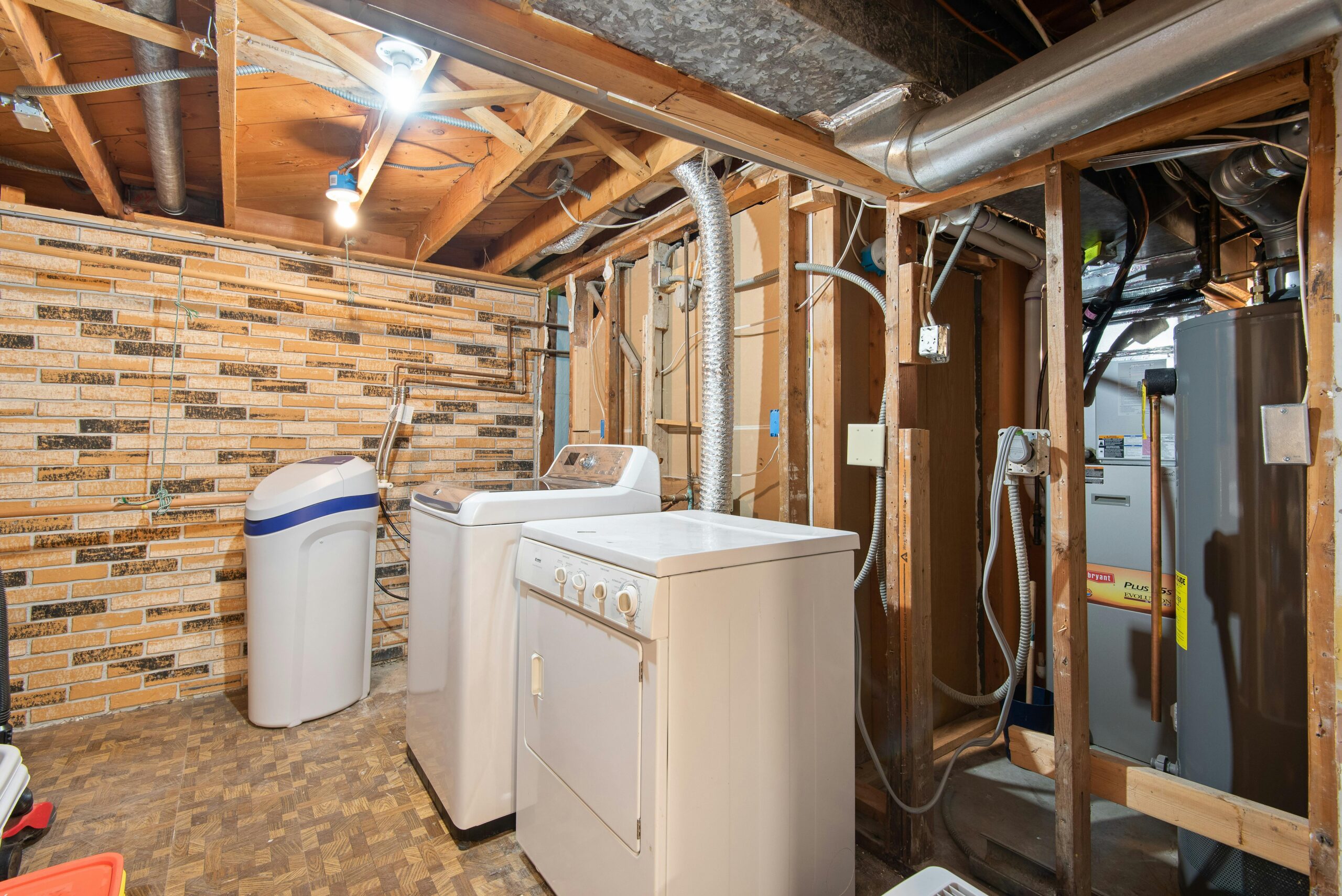Crawl space foundations and slab foundations are commonly used in building residential homes throughout the Pacific Northwest. If you are in the process of building a new home, you may find yourself choosing between the two.
If you are in the market to buy a new home, it is worth asking and learning about the type of foundation your desired home was built on to understand how to care for your home in the future.
Read on to learn more about the difference between Crawl Space vs Slab Foundations. If you are looking for services for your home’s crawl space, contact Crawl Pros – a professional crawl space company.
Buildings constructed on top of a thick, level concrete slab are built on a slab foundation.
Concrete is poured four to eight inches deep on a level surface for slab foundations. A block of thicker concrete is also poured around the perimeter.
A crushed gravel or sand layer is usually beneath the slab to assist in the drainage process. Rods are installed to reinforce slab foundations once the concrete is poured.
Slab foundations are more commonly used in warm climates since sub-zero temperatures will crack them. The following sub-groups exist within the slab foundation category:
- Slab-on-grade foundations (suitable for where the ground doesn’t freeze.)
- T-shaped slab foundations (more catered for where the ground freezes.)
- Frost-protected slab foundations (these have insulation.)
Slab foundations can endure for decades when adequately constructed on well-graded land.
Pros Of Slab Foundation
Slab foundations are easy to construct: only one block of stone is used to pour the entire foundation. Leveling out the grade is the most time-intensive component of the process. Once it’s time to pour the concrete and add reinforcement bars, the process is seamless.
The inexpensiveness of a slab foundation might be its most significant selling point. Upfront costs are low, and it might offer long-term savings since there’s little maintenance required.
A slab foundation is also resistant to mildew, mold, pest damage, etc.
Cons Of Slab Foundation
Slab foundations can only be built on level ground. Homes on steep slopes can’t use them unless you’re exceptionally creative with your home’s design.
You won’t get any extra space with a slab foundation for pipes, storage, or wires since it’s built directly on the ground. Gas and water lines are often embedded into the foundation, potentially increasing costs to access those lines.
Standard slab foundations won’t hold up in colder climates because they’re prone to breaking and cracking when the ground freezes and thaws.
What Is A Crawl Space Foundation?
A crawl space foundation is typically raised at least 18 inches above ground level. They are also known as elevated foundations. Construction is performed with exterior concrete walls that leave space in your crawl space for a variety of necessary infrastructure elements.
Block and base foundations as well as pier and beam foundations are the two types of crawl space foundations. The most common is block and base foundations.
Crawl space slopes can vary, meaning there’s no need for the ground to be completely level.
Pros Of Crawl Space Foundation
Hillside or uneven houses benefit greatly from crawl spaces since they can be elevated enough to remain level.
When homes are equipped with crawl space foundations, gas pipes, electrical elements, and plumbing lines are regularly housed within the gap between a home’s floor and the ground.
The easily accessible wires and pipes in crawl space foundations offer more freedom with home renovation options.
Cons Of Crawl Space Foundation
Crawl spaces can be vulnerable to breeding mold, mildew, and pests. While there are straightforward ways to neutralize this risk, a home’s foundation can be severely damaged if these risks are left unmanaged.
You’ll pay more upfront for a crawl space foundation. The resulting long-term savings can often far outperform slab foundations.
Differences Between Crawl Space Vs. Slab Foundation
One similarity between a crawl space foundation and a slab foundation is that they are both known to be less expensive alternatives to full basement foundations. However, in the process of choosing one of these foundations, you lose the functionality of a basement foundation.
Three main differences between a crawl space foundation and a slab foundation include:
- Crawl spaces have space for wires, plumbing, and storage, whereas slab foundations do not.
- Crawl spaces must be reinforced and maintained to stave off mold, mildew, and pests. Slab foundations don’t require as much attention.
- A slab foundation must be built on level ground, while crawl space foundations are elevated and are capable of being built on slopes.
Why Aren’t Slab Foundations Popular In The Pacific Northwest?
Slab foundations don’t do very well in dealing with the elements. While the Pacific Northwest is relatively warm, the temperatures get below freezing. A more robust, higher-quality solution is often required.
Moreover, the Pacific Northwest is known for its vast mountain ranges, meaning the land isn’t often flat. Crawl spaces are far more conducive to being built on slanted land, whereas slab foundations falter under these circumstances.
Pacific Northwest homeowners still face one issue when building a crawl space foundation. Specifically, these areas are known for attracting pests and the growth of mildew and mold.
Regularly scheduled maintenance is an absolute must to prevent these issues.
Why Is It Important To Maintain Your Crawl Space?
Mold, mildew, and pests invading your home may sound inconvenient, but they can be much worse than a mere annoyance. For one, mold and mildew will adversely impact the air quality in your home, putting your family’s health at risk.
Pest removal can be a costly endeavor, too. Plus, poorly maintained crawl spaces don’t help with heating and cooling your home, causing snafus with energy efficiency in your home.
There’s also the potential for expensive water damage and rotting in your home’s foundation if your crawl space isn’t well maintained.
How Crawl Pros Maintains Crawl Spaces
Maintaining your crawl space will mitigate the associated risks and maximize the benefits.
Common crawl space services include:
- Crawl space Cleanouts
- Crawl Space Mold Remediation
- Crawl Space Water Removal & Remediation
- Crawl Space Insulation Installation
- Crawl Space Duct Sealing & Installation
- Crawl Space Encapsulation & Vapor Barrier Services
Services such as crawl space insulation, encapsulation, and vapor barrier installation mitigate unforeseen weather and circumstances. Crawl Pros offers a full range of services to ensure your crawl space remains free of pests, mold, and other harmful debris.
Our services aim to help our customers maintain a cost-effective and energy-efficient home. Learn more about these services by completing our contact form to receive a free estimate–no strings attached!
Why Should Homeowners Choose Crawl Pros?
We love discussing this topic because we are passionate about all things involving crawl spaces.
We extend every effort to give our customers optimal results. We want our clients to know that their living space is safe, comfortable, and at no risk of costly catastrophes.
We’re aware of the challenges that exist with living in the Pacific Northwest. Some might assume our climate is more suitable for slab foundations because the humidity and moisture are conducive to mold growth.
However, the landscape doesn’t often allow for slab foundations, and–through our services–your crawl space will be more than up to the challenges presented by the Pacific Northwest environment.
Moreover, you can count on us to live up to our Perfect Guarantee – our team won’t settle for anything less than 100% customer satisfaction. Contact Crawl Pros today to speak with a representative about optimizing your crawl space.



